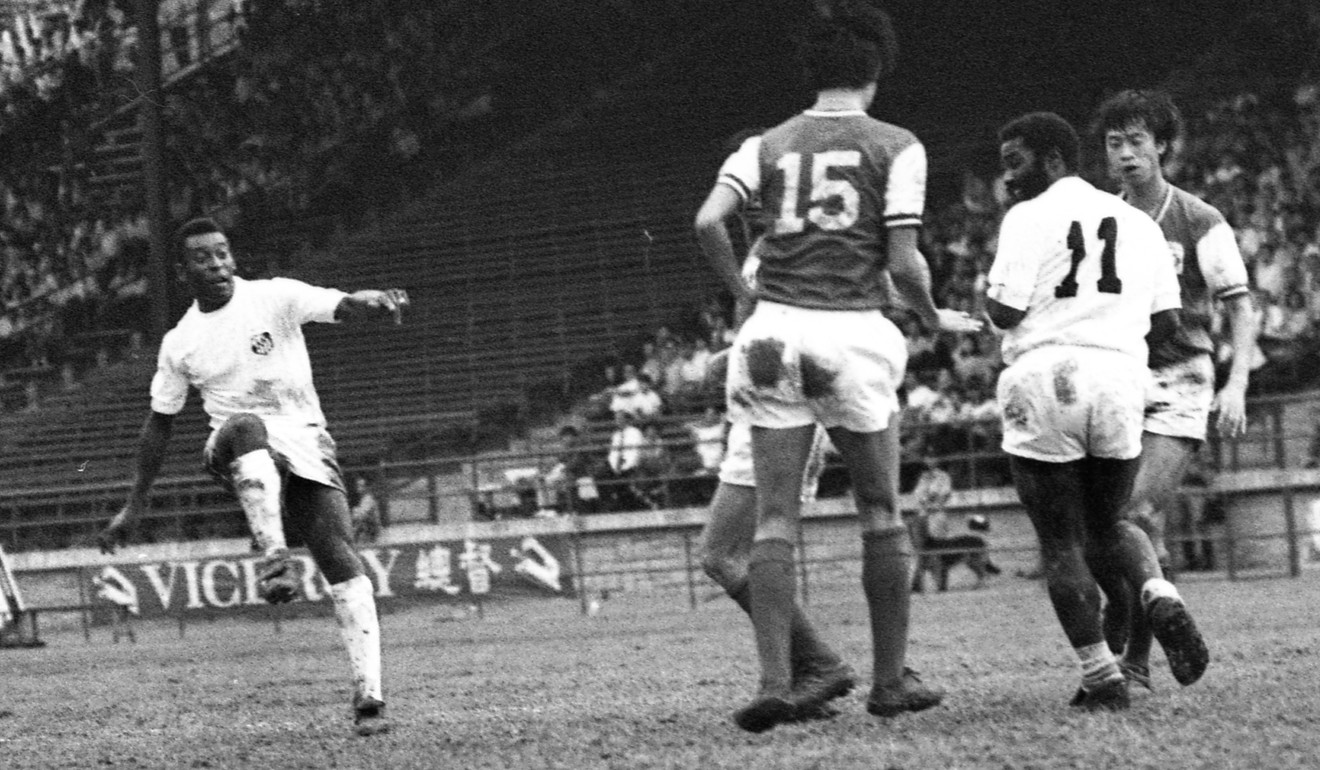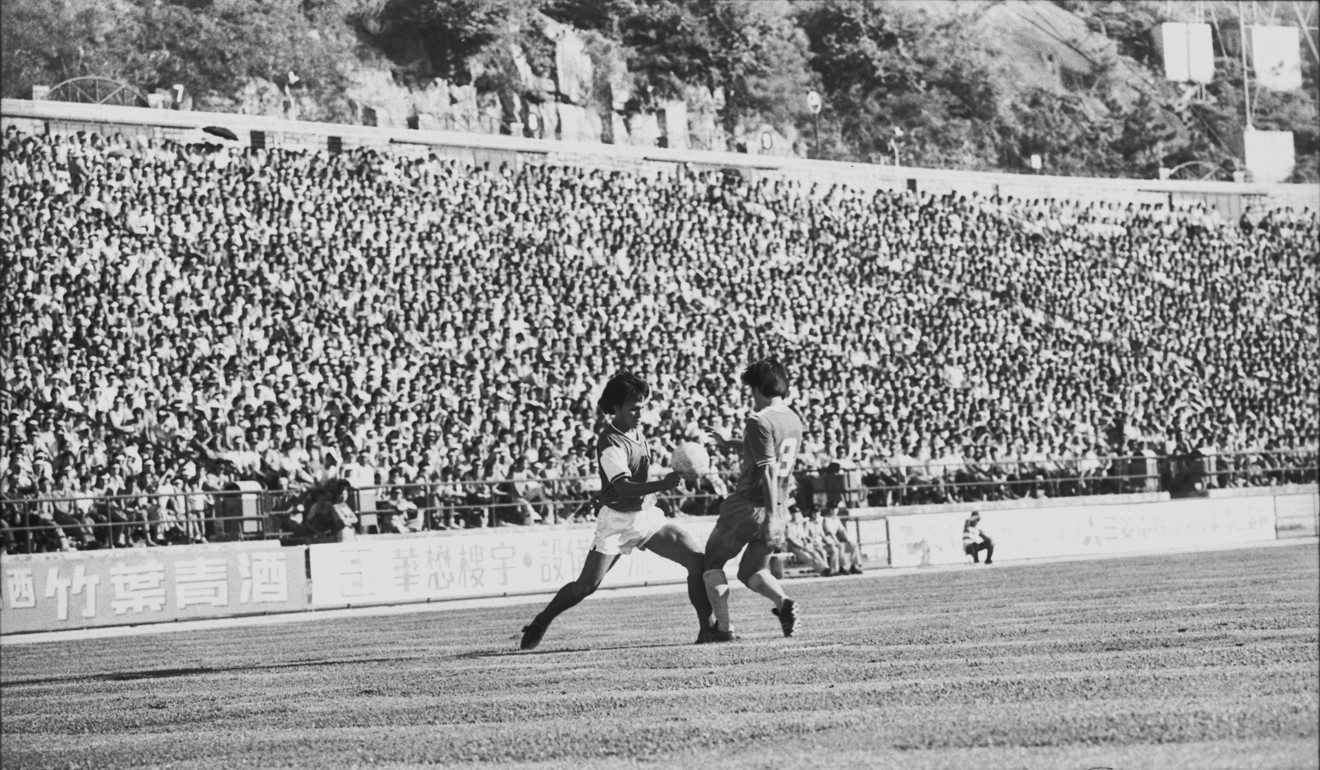
Is Hong Kong football doomed? South China’s withdrawal a kick in the teeth for local game
It’s going to take some getting used to as the Caroliners make a surprise move to abandon top-flight football, hammering another nail in the coffin for Hong Kong’s seemingly doomed local scene
South China’s decision to withdraw from the Premier League – preferring to focus on their youth policy – has driven another nail in the coffin of Hong Kong soccer, already reeling from dwindling crowds and low interest.
Since the team were founded in 1904, South China have always been at the forefront. They won a record number of trophies, lifting the Hong Kong league 41 times, the Senior Shield 31 times and were FA Cup champions 10 times.
Their red and white strip has always been a proud sight for South China fans but next season they will play in the First Division – the second-tier of the domestic game – for the first time in a century.
Former Premier League champions Eastern also experienced problems last season, giving up, at first, their participation in the AFC Champions League because they ran into “financial difficulties” only to make an unexpected return.
Eastern’s participation in the top-tier Asian club championship was largely a forgettable one – at least on the pitch – losing all but one of their matches, which was marred by fans from Eastern and Guangzhou Evergrande carrying political banners. The pressure got to their trailblazing female coach, Chan Yuen-ting, who stepped down to take up a lesser role with the club.

Crowd attendance for the past season was down 11.49 per cent compared to the previous season, meaning the average crowd was just a paltry 901 per match, although amateur clubs Hong Kong Football Club and a Guangzhou R&F youth development side helped push the figures down.
For South China fans, it’s going to be a bitter pill to swallow. It wasn’t that long ago fans used to scramble up fences to catch a glimpse of their team in action at a packed Hong Kong Stadium.
Watch: South China v Johor Darul Ta’ Zim (AFC Cup 2016: Quarter-final first-leg)
Fans cheered wildly when they won and jeered when they lost. They rioted when things got out of hand as they did in 1982 when they were relegated from the old first division.
According to records, the riot was the largest civil disorder in Hong Kong since the 1967 riots. Faced with a grim situation, the Caroliners were invited back to the senior league by the FA because they were simply “too big to fail”.
On the international front, South China proved they could hold their own against Asia’s best, becoming the only local club to have garnered any success.

They reached the final of the now-defunct Asian Cup Winners’ Cup in the 1993-94 season and eight years ago they reached the semi-finals of the AFC Cup.
For years, they dominated the Hong Kong national team and many of Hong Kong’s greatest players, from Lee Wai-tong to Wu Kwok-hung, played for the Caroliners. Heck, even former Manchester star Nicky Butt wore the red and white.
The club had it all, even their own home ground, which was disused during the 1980s because of spectator safety concerns.
A lot of us were South China fans, too – or at least a member of the club. Where else can you swim in a private Olympic-sized pool or play tennis on clay or bowl in one of the city’s best-run 60-lane bowling alleys? For HK$120 adult membership per annum, that’s a cracking deal. The Caroliners were always in good financial shape.

So it came as a shock that South China’s management decided to withdraw from the Premier League to “focus on junior development and build a solid foundation”.
Reading between the lines, they were trying to say it was no longer financially viable to run an expensive team without winning major silverware (South China finished fourth in the league and reached the FA Cup final this past season).
The club’s decision goes against their long-standing policy of “winning everything in sight”. It was an unbelievable decision given that South China have always found a financial backer.
It was the norm, for at least the last two decades, that if South China performed well in the league, it would guarantee better crowd attendance and turnover. But admittedly, the Caroliners haven’t performed to expectations during the past few years.

Ironically, South China throwing in the towel is similar to one-time super local club Seiko calling it quits in the late 1980s, but South China’s impact will be harder felt here and abroad.
Former Hong Kong international Tim Bredbury at first couldn’t believe his old club had quit the Premier League.
“Basically I’m shocked and saddened to hear the news,” said Bredbury. “A successful South China is vital for a healthy Hong Kong league. They are the people’s club and it will be interesting to see the fans reaction.”
Fans have already voiced their disgust at the decision. The two strongest clubs in Hong Kong, Eastern and Kitchee, will scrap for the trophies. Without South China it’s going to take some getting used to.
The Hong Kong national squad will suffer, too. Hong Kong coach Kim Pan-gon is unlikely to pick players in the First Division.

With South China out of the fray, it will be interesting how the local league will be able to survive, which raises the next big question: Whether other top clubs will follow suit and pull the plug.
We have reached a critical juncture. Could this be an opportunity to field a team in the Chinese Super League once and for all?
Whether a club or combined team make the jump to join the league across the border, Hong Kong fans will moan that there will be one less club to cheer for in next year’s domestic league.
And that, unfortunately, is the biggest club of them all.

